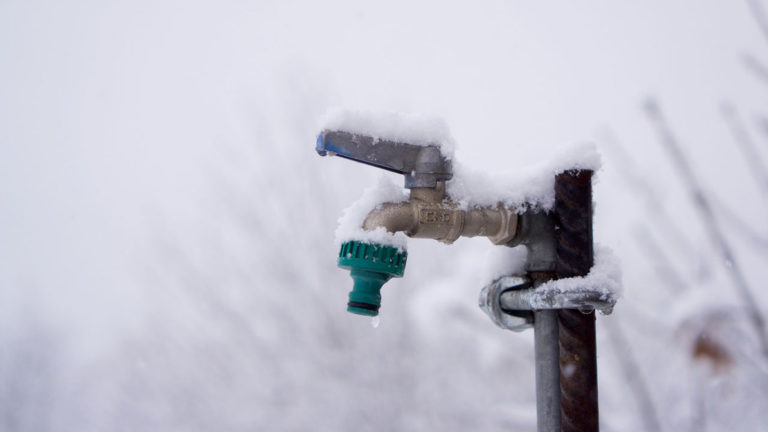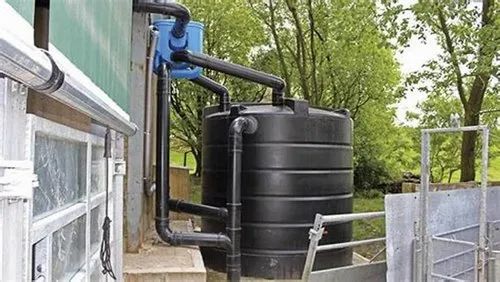Grey water, which is wastewater generated from household activities such as bathing, showering, and doing laundry, can be repurposed into a sustainable irrigation system for your garden or landscaping.
By harnessing this readily available resource, you can reduce your reliance on potable water, lower your water bills, and help protect the environment from the negative impacts of excessive water use.
With the right planning, design, and implementation, a grey water irrigation system can provide a reliable and cost-effective source of water for your garden, while also helping to conserve this precious resource.
We’ll walk you through the steps necessary to create such an system in your own home or property.
Assess your water needs
Before you start, it’s important to assess your water needs and determine how much water you need to irrigate your garden or lawn. This will help you determine the right amount of grey water you need to collect and use.
To start, you’ll need to evaluate the size of your garden or lawn and the number of plants you plan to irrigate.
This will give you an idea of how much water you need to collect and use.
Next, consider the climate and weather patterns in your area.
If you live in a hot and dry climate, you may need to collect and use more water than someone who lives in a mild and wet climate.
If you have a large garden or lawn with many plants, you may need to collect and use more water than someone with a smaller garden or lawn.
Once you have an idea of how much water you need, you can begin to evaluate your grey water sources.
This may include the water from your sinks, showers, and washing machine.
You’ll need to calculate how much water these sources produce and determine how much of it can be safely used for irrigation.
By assessing your water needs and evaluating your grey water sources, you can determine the right amount of water to collect and use for your garden or lawn.
This will not only help you conserve water, but it will also ensure that your plants receive the right amount of water to thrive.
So, take the time to assess your water needs and evaluate your grey water sources before you begin using grey water for irrigation.
It’s a simple yet effective step that can make a big difference in the health and longevity of your plants.
Choose the right storage tank
You’ll need a storage tank to collect and store the grey water. Choose a tank that is durable, food-grade, and suitable for the amount of water you plan to collect.
When it comes to choosing the right storage tank for your grey water system, there are several factors to consider.
First and foremost, the tank must be durable and able to withstand the weight and pressure of the water inside.
A heavy-duty plastic or concrete tank is a good option, as they are resistant to corrosion and can withstand the weight of the water.
The tank must be food-grade, meaning it must be safe for use in food preparation and consumption.
This is especially important if you plan to use the grey water for irrigation or other purposes that may come into contact with food.
The tank must be suitable for the amount of water you plan to collect.
If you’re only collecting a small amount of water, a smaller tank may be sufficient, but if you’re planning to collect a large amount, you’ll need a larger tank to accommodate the volume.
By taking these factors into consideration, you can ensure that your storage tank is well-suited for your grey water system and will provide reliable performance over the long term.
Install a greywater collection system
You’ll need to install a greywater collection system that captures the water from your sinks, showers, and washing machine. This can be done using a network of pipes and valves.
To install a greywater collection system, you’ll need to begin by identifying the sources of greywater in your home, such as sinks, showers, and washing machines.
Once you’ve identified these sources, you’ll need to install a network of pipes and valves to collect and transport the greywater to a storage tank or cistern.
This may involve cutting into your existing plumbing lines to redirect the water flow, so it’s important to work with a licensed plumber to ensure that the installation is done safely and properly.
Next, you’ll need to install a storage tank or cistern to hold the collected greywater.
This can be made of plastic or concrete, and should be sized appropriately to handle the volume of greywater your home generates.
The storage tank should also be equipped with a filtration system to remove any contaminants or debris from the water.
Once the storage tank is in place, you’ll need to install a distribution system to deliver the greywater to your landscape.
This may involve laying irrigation lines or installing drip irrigation emitters to deliver the water directly to your plants.
You’ll also need to ensure that the distribution system is properly connected to the storage tank and that the water is distributed evenly throughout your landscape.
You may be eligible for incentives or rebates from your local government or water utility for installing a greywater system, so be sure to research these options before beginning your project.
Use a sedimentation tank
A sedimentation tank can help remove solids and other contaminants from the grey water before it’s used for irrigation. This will help prevent clogs and keep your irrigation system running smoothly.
To ensure optimal performance of your irrigation system and prevent costly repairs, consider investing in a sedimentation tank for your grey water treatment.
A sedimentation tank can help remove solids and other contaminants from the grey water, such as suspended particles, bacteria, and viruses, before it’s used for irrigation.
By removing these impurities, the sedimentation tank can prevent clogs and keep your irrigation system running smoothly, extending its lifespan and reducing maintenance costs.
By removing contaminants, the sedimentation tank can help prevent the spread of waterborne diseases and protect the health of your crops.
By implementing a sedimentation tank in your grey water treatment process, you can ensure a reliable and sustainable source of irrigation water for your crops.
Implement an irrigation distribution system
You’ll need to set up an irrigation distribution system that delivers the grey water to your garden or lawn. This can be done using a network of pipes and sprinklers.
To effectively distribute grey water throughout your garden or lawn, it’s essential to set up an irrigation distribution system.
This network of pipes and sprinklers will ensure that the water is delivered in a controlled and efficient manner, allowing for optimal growth and health of your plants.
The pipes should be made of durable materials, such as PVC or HDPE, and should be sized appropriately to handle the flow rate of the grey water.
The sprinklers should be strategically placed throughout the area, with spacing and angle adjusted based on the specific needs of your plants.
Consider incorporating a pressure regulator and a backflow prevention device to protect against contamination and ensure safe operation of the system.
With the right irrigation distribution system in place, you can effectively utilize your grey water and create a thriving oasis in your yard.
Use drip irrigation
Drip irrigation is a water-efficient way to irrigate your plants. It delivers water directly to the roots of the plants, reducing evaporation and runoff.
Drip irrigation is an excellent way to efficiently water your plants while minimizing waste.
Unlike traditional sprinkler systems, drip irrigation delivers water directly to the roots of the plants, reducing evaporation and runoff.
This targeted approach ensures that the water is being used only by the plants, and not being lost to the surrounding environment.
As a result, drip irrigation can save up to 50% of the water used compared to traditional irrigation methods.
Drip irrigation helps to prevent overwatering, which can be harmful to plants, by only providing water when and where it is needed.
This precision watering also promotes healthy root development, which leads to stronger and more resilient plants.
Overall, using drip irrigation for your plants can lead to better growth, increased yields, and a more sustainable water usage.
Monitor and maintain your system
It’s important to regularly monitor and maintain your grey water irrigation system to ensure it’s running efficiently and effectively. This includes checking for leaks, cleaning the sedimentation tank, and replacing any damaged or worn-out components.
Regular monitoring and maintenance are important to ensure that your grey water irrigation system is running efficiently and effectively.
This involves checking for leaks, cleaning the sedimentation tank, and replacing any damaged or worn-out components.
Leaks can waste water and reduce the system’s overall performance, so it’s important to detect and repair any leaks as soon as possible.
Cleaning the sedimentation tank helps to remove any debris or contaminants that may have accumulated, which can improve the system’s water quality and extend the life of the components.
Regularly inspecting and replacing any damaged or worn-out components can help to prevent breakdowns and ensure that the system continues to function properly.
By prioritizing regular monitoring and maintenance, you can help to ensure that your grey water irrigation system continues to provide optimal performance and minimize any potential issues.
Consider using a grey water treatment system
Depending on the type of greywater you’re using and the requirements of your local authorities, you may need to install a grey water treatment system to remove contaminants and pathogens from the water before using it for irrigation.
If you’re considering using greywater for irrigation, it’s essential to install a grey water treatment system to ensure the water is safe for use on your plants.
Greywater is the wastewater generated from sinks, showers, and washing machines, and can contain a range of contaminants and pathogens that can be harmful to humans and the environment.
A grey water treatment system is designed to remove these contaminants and pathogens, making the water safe for irrigation.
There are different types of treatment systems available, including physical, chemical, and biological systems.
Physical systems use physical processes like filtration and sedimentation to remove contaminants, while chemical systems use chemicals like chlorine to kill pathogens.
Biological systems use living organisms like bacteria to break down organic matter and remove pathogens.
Before selecting a grey water treatment system, it’s important to consider the type of greywater you’re using and the requirements of your local authorities.
Some greywater may contain higher levels of contaminants or pathogens, and may require a more comprehensive treatment system.
Local regulations may vary regarding the use of greywater for irrigation, so it’s important to ensure your system meets all necessary standards.
It can remove contaminants and pathogens from the water, making it safe for use on your plants.
By considering the type of greywater and local regulations, you can select the appropriate treatment system for your needs.
Want More? Dive Deeper Here!
Hey there! If you’re the type who loves going down the rabbit hole of information (like we do), you’re in the right spot. We’ve pulled together some cool reads and resources that dive a bit deeper into the stuff we chat about on our site. Whether you’re just killing time or super into the topic, these picks might just be what you’re looking for. Happy reading!






